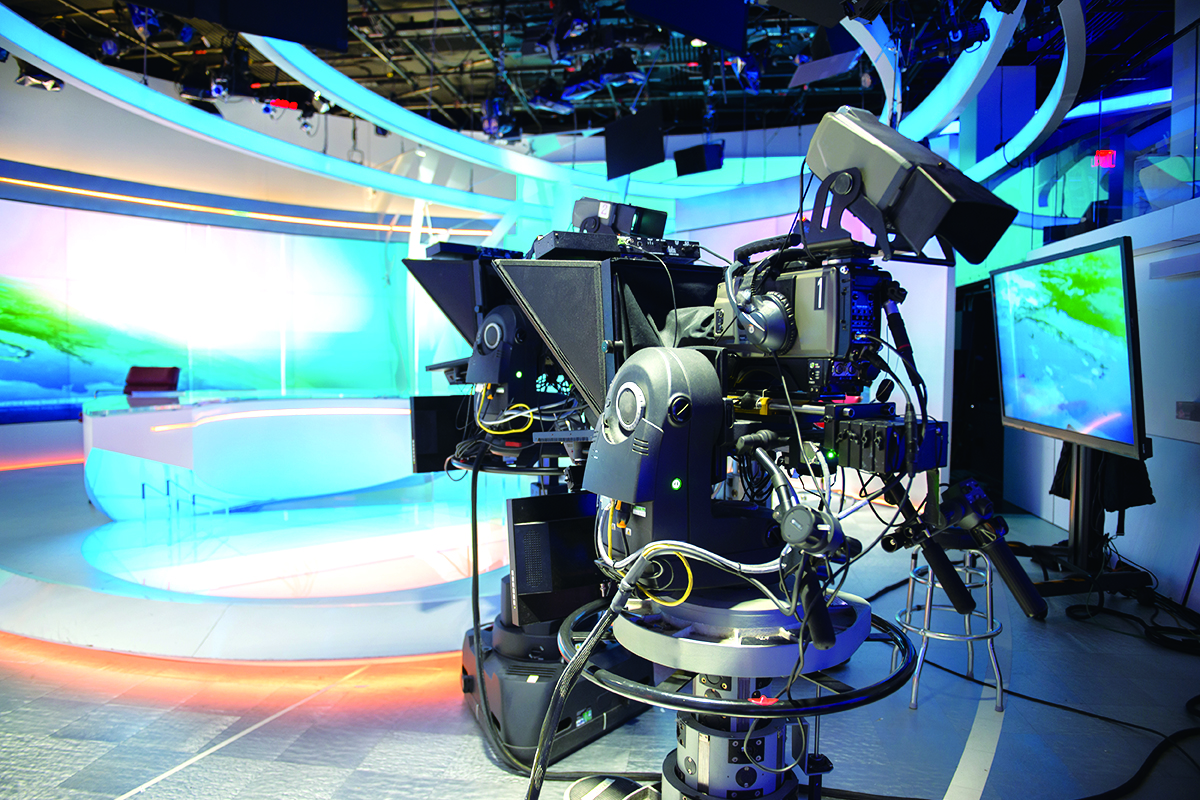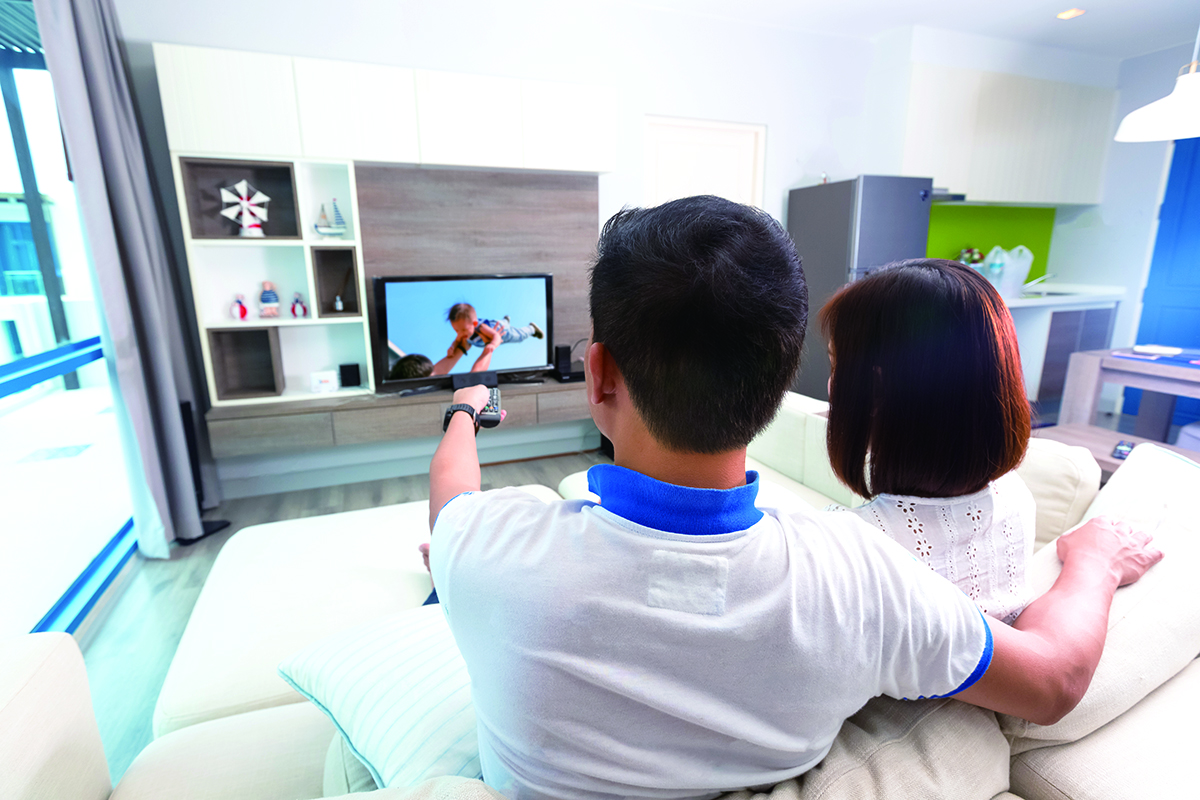Development of Digital Terrestrial Television Services
Domestic free television programme service licensees (free TV licensees) are responsible for constructing transmission networks or engaging other network service operators to deliver their free TV services throughout Hong Kong. Among the three free TV licensees, Television Broadcasts Limited (TVB) and HK Television Entertainment Company Limited (HKTVE) (which operates ViuTV) provide a total of seven digital terrestrial television (DTT) programme channels using radio spectrum for transmission2. Since the launch of DTT services in late 2007, a total of 29 transmitting stations have been constructed by phases. Currently, the overall coverage of DTT transmission networks is close to 100% of the population.
In Hong Kong, both analogue television and DTT services operate in the 470 – 806 MHz band, the frequency band allocated by the International Telecommunication Union (ITU) primarily for TV broadcasting services worldwide. During the year, OFCA provided advisory services to the Government on the planning for ASO in Hong Kong and the release of spectrum for mobile telecommunications services after ASO. OFCA liaised with the Mainland authorities on the ASO target date and post-ASO frequency coordination. After ASO, TVB, HKTVE and Radio Television Hong Kong will be required to relocate their TV frequency channels in the 614 – 806 MHz band to the 470 – 614 MHz band, thereby making available a total of 160 MHz of spectrum in the 614 – 806 MHz band for the provision of high value-added mobile telecommunications services. OFCA will continue to coordinate with the Mainland authorities on the use of the radio spectrum in the 470 – 806 MHz band, and with the relevant broadcasters on the relocation of their TV frequency channels.
Review of Television and Sound Broadcasting Regulatory Framework by the Government and Implementation of Measures by the CA to Streamline Administrative Requirements
In 2018/19, OFCA provided support to CEDB in the latter's review of the television and sound broadcasting regulatory frameworks with the aim of modernising the regulatory framework in response to market needs and technological developments. After the review, CEDB proposed to relax cross-media ownership restrictions in relation to free television, pay television and sound broadcasting licences; and foreign control restrictions in relation to free TV licences. CEDB also proposed to remove the requirement that a free TV or sound broadcasting licensee must be a non-subsidiary company. In March 2019, CEDB introduced into the Legislative Council the Broadcasting and Telecommunications Legislation (Amendment) Bill 2019 proposing legislative amendments to give effect to the above relaxation measures.
Apart from the above legislative amendments pursued by CEDB, the CA also implemented non-legislative measures as part of the multipronged approach to facilitate the development of the broadcasting industry. In July 2018, the CA revised codes of practice to relax the regulation of indirect advertising in television programme services and to lift the prohibition on the broadcast of advertisements for undertakers and associated services. Such measures enable the industry to diversify their source of advertising while still safeguard viewers' interests. OFCA also assisted the CA in streamlining certain administrative requirements, thereby further easing the regulatory burdens on the broadcasting industry. Specifically, the reporting requirements were relaxed in January 2019 by allowing the licensees (pay television and sound broadcasting services) to submit reports on comments/complaints received on a quarterly basis instead of on a monthly basis, and waiving the requirement for free television licensees to submit the types and schedule of children's programmes. Furthermore, the period for broadcasting licensees to make representations to the Broadcast Complaints Committee under the CA in response to public complaints has been extended from seven working days to 14 working days with effect from February 2019. OFCA also implemented in March 2019 changes to administrative measures for enforcing foreign control restrictions applicable to free television licensees by simplifying the prescribed form for a declaration on voting control by shareholders before a general meeting, adjusting the deadlines for submission of a declaration, and disclosing to licensees the approval of applications for acquiring/holding shares by unqualified voting controllers subject to the consent of an applicant.
Licence Administration
Applications for Grant/Renewal of a Non-domestic Television Programme Service Licence and Other Licensable Television Programme Service Licences
In 2018/19, OFCA processed an application for a new non-domestic television programme service licence, which was subsequently rejected by the CA. OFCA also handled nine applications for renewal of other licensable television programme service licences for the provision of television programme services in hotel rooms in Hong Kong.
Handling of Broadcast Complaints
The CA does not pre-censor broadcast content. Instead, it adopts a complaint-driven approach to ensure that broadcast content complies with prevailing legislation, licence conditions and the codes of practice that it has issued. As the executive arm of the CA, OFCA assists the CA in handling complaints about broadcast materials in accordance with provisions in the Broadcasting (Miscellaneous Provisions) Ordinance (Cap. 391) (B(MP)O) and the broadcast complaint handling procedures of the CA.
In 2018/19, OFCA handled 1 504 cases (involving 3 827 complaints)3, which represented a reduction of 19% in the number of cases, and a reduction of 12% in the number of complaints processed, as compared with the figures recorded in 2017/18 (1 866 cases, involving 4 342 complaints). Among those cases handled, 17 cases (423 complaints) were referred to the Broadcast Complaints Committee under the CA for consideration before submission to the CA for deliberation and determination. Details of the complaint cases considered by the CA are published on its website. The Director-General of Communications handled the remaining 1 487 cases (involving 3 404 complaints) relating to breaches of a minor nature; allegations which did not constitute any breach; or were outside the remit of section 11(1) of the B(MP)O (i.e. the substance of the complaints did not involve contravention of relevant legislation, licence conditions or provisions in the codes of practice) with powers delegated by the CA.


